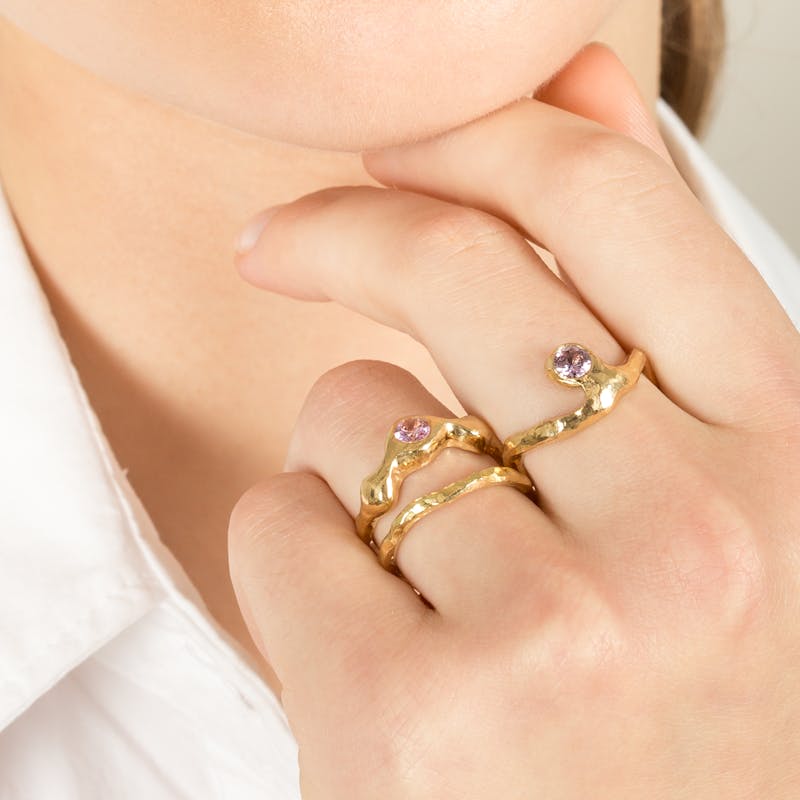Engagement Rings Fundamentals Explained
Engagement Rings Fundamentals Explained
Blog Article
Rumored Buzz on Engagement Rings
Table of ContentsRumored Buzz on Engagement RingsThe Facts About Engagement Rings RevealedHow Engagement Rings can Save You Time, Stress, and Money.Engagement Rings Can Be Fun For EveryoneThe Only Guide for Engagement RingsThe 7-Second Trick For Engagement Rings
Tension-style setups also provide much far better safety for the gemstone. Most tension-style setups are produced round brilliant rubies or other rounded gems, but they can be changed to fit lots of other forms. The setting can also be modified to have accent gems around the centre stone or to permit a side rock on each side of the centre stone.Creates an optical impression of the centre gems hanging in the air. If it has prongs, they can end up being loosened with wear. This is easily treated by having the ring frequently cleaned and inspected by a jeweler.
Rumored Buzz on Engagement Rings
The very first ring with a real stress setup was made in Vreden, Germany in the 1970s. Ursula Exner and well-known carver Walter Wittek functioned with each other to design and make this very first ring. In the complying with years, various other jewellers created their very own stress settings, as well as the a lot more safe and secure and practical tension-style settings.
:max_bytes(150000):strip_icc()/types-of-engagement-ring-settings-guide-2000-86f5b8f74d55494fa0eb043dee0de96e.jpg)
This provides the ring an easy, but fashionable elegance that functions well for both males and females's wedding celebration rings, along with interaction rings. The flush setting is sometimes additionally called a gypsy setting. We can't claim without a doubt exactly how it came to have that name, but probably it is since the setting stands for a complimentary spirit.
Rumored Buzz on Engagement Rings
Flush setups work well for round, square or rectangle-shaped gemstones, however they can be hard to adjust to particular elegant cuts, as an example, a heart-shaped diamond. Keeps the gems risk-free and protected. Uses particularly well. Practical for people with active way of livings. Sticks out for having a simple, however stylish charm.
Commonly not practical for heart-shaped treasures and a few other gems with elegant cuts. Rings with flush or gypsy settings have actually been around given that the late 1800s.
Jewelry involvement rings have just one centre gems on an ordinary band. Lots of other interaction rings, though, also have accent gemstones.
Engagement Rings for Dummies
There are 4 setups that are widely used to hold accent gems. The castle setting earned its name due to the fact that from the side it appears like the battlements on top of a castle wall surface. This setup is also regularly called the scallop setting. Castle setups learn the facts here now are made directly on the shank of the ring.
The prongs in a castle setting can be right up and down with basic rounded ideas or they can be cut at an angle so that they look like fishtails. Castle setups are extremely functional.
See This Report about Engagement Rings
If it is well made, the reduced scalloped side of the castle setup can also create an optical illusion. It enables the sides of the gems to be easily seen and creates the impact that the treasures are being held in an unseen setup.
Increases light refraction and radiance. Catches interest with its shimmers. Develops the their website impression of an unseen setup. Has an elegant charm. Easy to clean and requires little maintenance. The small prongs can end up being loose. We suggest that rings with the castle setting be cleaned occasionally by a jeweller, to ensure that the prongs can be inspected.
The prongs on a castle setting can capture on apparel, yet this is uncommon since the prongs are smooth. The castle setup can be used to make lovely infinity rings. The initial endless time rings were made in the 1960s. Those initial rings, like infinity rings today, have a row of carefully set gems entirely surrounding their shank.

Engagement Rings Things To Know Before You Get This
The grain setting is a really safe and secure setting. One drawback of the this page grain setup is that the gems obtain much less light due to the fact that they are established down in the channel.
Every gem in the bead setup is surrounded by 4 shiny beads that are degree with the top of the shank. These beads capture the light and emit their own sparkles everywhere. The grains' shimmers along with the luster and shines generated by the accent gems bring the bead readying to life and provide it continual shimmers.
They can utilize it to make eternity rings, along with to embellish the easy shank or even more elaborate split shank that some involvement rings have. In the basic grain setting, the accent gems are set in one straight line. Occasionally, though, jewelers will raise the glimmer on an interaction ring by adding 2 or more identical lines of grain set gems.
Report this page